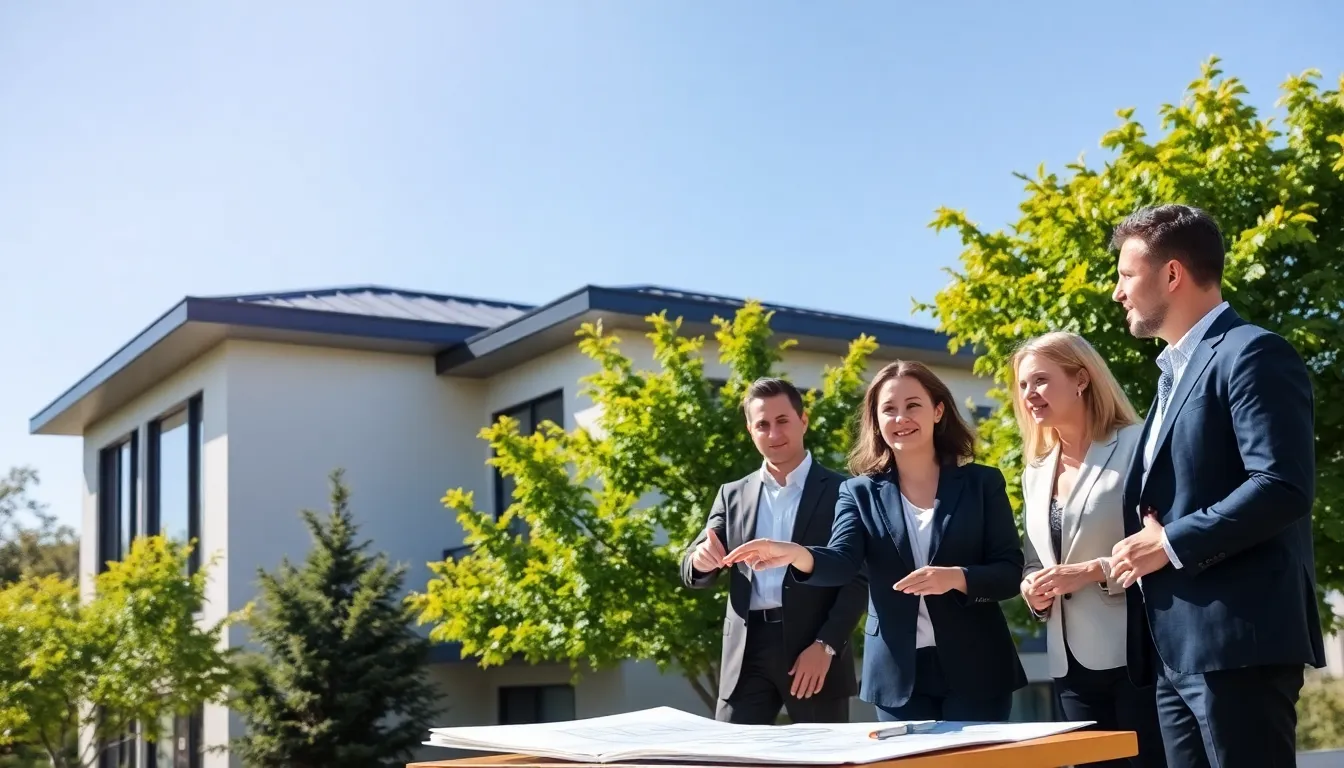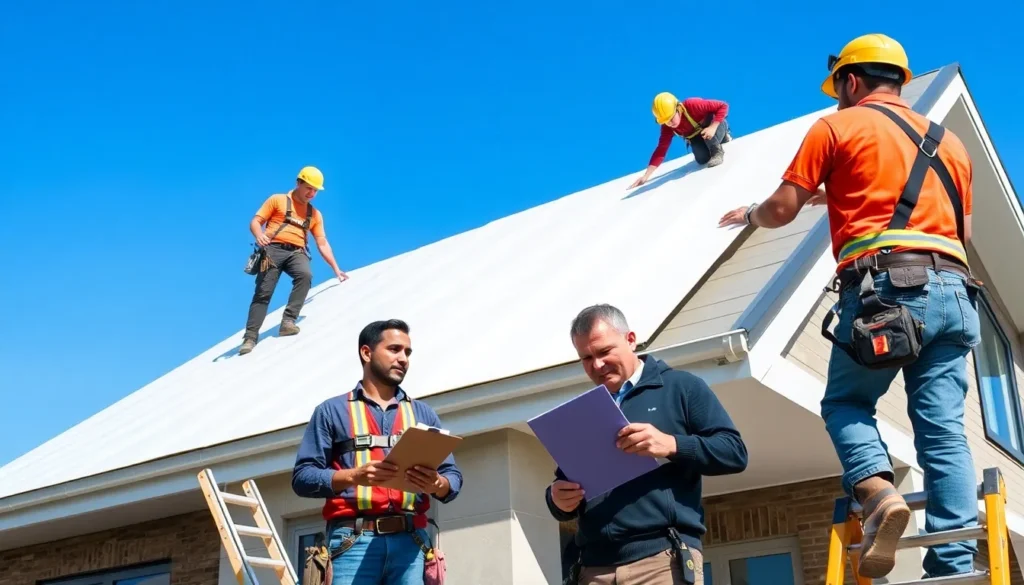If you’ve ever found yourself standing in a hardware store, bewildered by the sheer number of roofing options available, you’re not alone. Vinyl roofing might just be the underdog hero you’ve been waiting for. This roofing solution is as durable as your favorite old record and as versatile as your go-to recipe for pizza. Join us as we uncover what vinyl roofing is all about, how it can benefit you, and what makes it stand out among its competitors. Spoiler alert: You won’t need a time machine to appreciate its value.
Table of Contents
ToggleWhat Is Vinyl Roofing?

Vinyl roofing is a type of roofing system made from polyvinyl chloride (PVC). This robust material is favored for its impressive resistance to moisture, UV rays, and various weather conditions. It’s often used in flat or low-sloped roofs, commonly seen in commercial buildings and increasingly being adopted for residential homes. One of the great things about vinyl is its ability to come in a variety of colors and styles, making it an aesthetically pleasing choice for various architectural designs.
Essentially, vinyl roofing is like a trusty old friend who can handle tough times but still looks good doing it. Its waterproof nature ensures that your roof stays protected from rain and snow, helping to prevent costly leaks and damage. Plus, with modern technological advancements, many products on the market are designed to be environmentally friendly, catering to today’s eco-conscious homeowner.
Benefits of Vinyl Roofing
Choosing vinyl roofing isn’t merely about having a cool roof over your head: it’s about making a smart investment. Here are a few benefits that make vinyl roofing a top contender in the market:
- Durability: Vinyl roofing can withstand harsh weather conditions, meaning fewer repairs or replacements over time.
- Low Maintenance: Forget the never-ending weekend chores. With vinyl, periodic cleanings are usually all that’s needed.
- Cost-Effective: Vinyl roofing materials are typically less expensive than traditional options like slate or tile. When installed properly, they can save homeowners a bundle in the long run.
- Energy Efficiency: Many vinyl roofing systems come with reflective surfaces that help reduce energy costs, keeping your home cooler in the summer.
By opting for vinyl, homeowners tap into these benefits, allowing them to focus more time on enjoying their home rather than worrying about roof maintenance.
Installation Process of Vinyl Roofing
When it comes to installing vinyl roofing, the process can be straightforward, but it’s essential to know what to expect. Typically, the installation consists of a few key steps:
- Preparation: The existing roof must be thoroughly inspected to address any hidden issues and ensure a solid foundation.
- Underlayment Application: This step involves laying down a protective underlayment, crucial for preventing moisture infiltration.
- Vinyl Sheets Installation: The vinyl sheets are meticulously rolled out and secured in place. Each sheet overlaps the previous one to ensure a watertight seal.
- Flashing Installation: Flashing around roof edges, chimneys, and vents helps prevent leaks in vulnerable areas.
- Final Inspection: The last oversight is to double-check everything to ensure that the roof is ready to withstand the elements.
Though some daring DIY enthusiasts might be tempted to handle this on their own, hiring experienced professionals can make a significant difference in the quality and longevity of the installation.
Maintenance Tips for Vinyl Roofing
Keeping your vinyl roof in prime condition is easier than one might think. Here are a few maintenance tips to keep your roof looking fresh:
- Regular Cleaning: A light washing with soap and water can do wonders. To remove mildew or stains, a gentle scrub with a non-abrasive brush can keep your roof pristine.
- Inspect for Damage: Semi-annual inspections can help catch minor issues before they escalate into major headaches.
- Check the Seals: Regularly verify that the seams and flashing are intact and watertight.
These simple steps can elongate the life of vinyl roofing, ensuring it continues to protect your home while looking its best.
Cost Considerations and Value
When diving into the financial aspect of vinyl roofing, it’s essential to consider both upfront costs and long-term savings. Typically, the installation costs for vinyl roofing can range from $3 to $6 per square foot, depending on the complexity of the roof design and the geographical location. While this might seem comparable to other materials, remember that its durability can lead to significant savings in maintenance and replacement costs.
Also, potential energy savings are an important factor to consider. Energy-efficient vinyl roofing can effectively lower utility bills by reducing cooling and heating costs. Overall, when looking at the cost versus value, vinyl roofing often delivers outstanding returns that can make it a wise decision for homeowners.
Comparing Vinyl Roofing to Other Roofing Materials
Vinyl roofing frequently finds itself in comparison with other popular materials like asphalt shingles, metal, and tile roofing. Here’s how it stacks up:
- Asphalt Shingles: While asphalt is affordable, it often lacks durability compared to vinyl, especially in extreme weather.
- Metal Roofing: Metal offers longevity and energy efficiency: but, it can be pricier than vinyl. Also, it may require more maintenance to prevent rust.
- Tile Roofing: Ceramic or slate tile looks beautiful but can be heavy and costly, and installation often demands significant structural support.
In comparison, vinyl roofing offers a solid balance of cost, durability, and aesthetic appeal, making it a versatile option worth considering.




